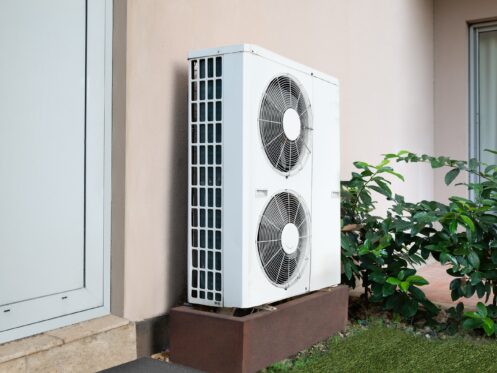Trying to keep your home comfortable all year can feel tricky, especially if different rooms heat or cool unevenly. That’s where ductless mini-splits come in. These compact systems give you control over individual spaces without bulky ductwork.
Greiner Heating and Air in Dixon, CA helps homeowners explore smart, efficient solutions like mini-splits to simplify heating and cooling. If you’re looking for a more flexible way to stay comfortable, you might be surprised at what these systems can do.
What a Ductless Mini-Split Actually Does
A ductless mini-split system cools and heats your home without needing large ducts running through the walls or attic. It uses an indoor air handler that connects to an outdoor unit through a small line set, usually only needing a few inches of space through the wall.
The indoor unit sits high on a wall, quietly blowing air into the room. You control it with a remote or wall-mounted panel, and you can pick a different temperature for each room with one. That flexibility is what makes mini-splits so different from other systems.
They work by moving heat instead of creating it. In the summer, the system pulls heat from inside your home and sends it outside. In winter, it does the opposite. That setup means you can cool one room without cooling the entire house. It also means you can heat a room you use often without running your main furnace for hours.
Perfect for Rooms That Never Feel Right
Most houses have a room that gets too warm in summer or too chilly in winter. Maybe it’s a bedroom upstairs that gets the afternoon sun. Maybe it’s a garage you turned into a home office. These spaces often don’t get enough airflow from the central system. A ductless mini-split solves that by giving the room its dedicated heating and cooling.
Instead of adding fans or space heaters that clutter the room or make too much noise, the mini-split keeps the space comfortable without calling attention to itself. You can set the temperature slightly cooler than the rest of the house at night or keep your workspace warmer during the day without changing the thermostat for everyone else.
It’s also a smart option for additions or finished basements. Running ductwork to new rooms isn’t always easy, especially in older houses or places with low ceilings. A mini-split gives you the comfort you want without tearing anything up.
Energy Use That Matches Your Routine
One of the biggest benefits of mini-splits is how they match the way you use your home. With a traditional central system, you’re heating or cooling the entire house, even if you only spend time in one part of it. That can mean higher bills and more wear on the equipment. Mini-splits let you target your energy use.
If you spend most of the day in one room, you can cool just that space during the afternoon instead of cooling rooms that aren’t being used. If someone in your home likes things warmer or cooler than everyone else, they can adjust the mini-split in their room without making anyone else uncomfortable. The system only runs when it needs to. Once the room hits the temperature you’ve set, it backs off. That steady, quiet cycle helps save energy and keeps your comfort consistent throughout the day.
Quiet Operation Makes a World of Difference
You might not notice the noise your current system makes until you hear how quiet a mini-split can be. Window units rattle and buzz. Central systems hum from the vents. Mini-splits, on the other hand, work quietly in the background.
The indoor unit uses a gentle fan that ramps up and down smoothly. There’s no loud start-up sound. The outdoor compressor sits farther away and is often quieter than a central AC unit. That makes a big difference, especially if the system is near a bedroom, study space, or nursery.
If you’ve ever had to turn up the TV because the AC kicked on or found yourself raising your voice during a phone call, the quiet hum of a mini-split can be a welcome change. It works without drawing attention to itself, which makes your living space feel calmer.
No Ducts Means No Air Loss
Ductwork isn’t always perfect. In many homes, it leaks air before it ever reaches the room it’s supposed to heat or cool. Sometimes it passes through hot attics or cold crawl spaces that mess with the temperature before it arrives. That lost air means your system must work harder to make up for it, and your energy bill reflects that.
Because ductless systems skip all of that, the air you feel comes straight from the source. It moves directly from the indoor unit to the room without losing temperature or pressure along the way. That direct path means faster cooling and heating without wasting energy.
It also helps you avoid issues that come with old or poorly installed ductwork. You don’t have to wonder whether a vent is blocked or whether one room is always going to be too cold. The mini-split makes each room its own zone.
Zoned Comfort That Actually Works
Zoned heating and cooling isn’t a new idea, but mini-splits make it easier to pull off. With central systems, zoning usually requires extra dampers and a more complex control system. Even then, the results aren’t always perfect. With ductless mini-splits, zoning comes built in.
Each indoor unit has its own control. That means you can set one bedroom to 70 degrees and another to 74 without any conflict, for example. If you’re cooking in the kitchen, you can bump the temperature down in that area without changing the setting in the living room. It’s a system that works with how families live, not against it.
Zoning also makes the system more efficient. Instead of pushing air through the whole house, you’re only adjusting the temperature in rooms that need it. That lowers your total energy use and gives you better control during every season.
Reliable in Both Summer and Winter
Many people think of mini-splits as cooling systems, but they work just as well for heating. A heat pump system pulls warmth from the air outside and brings it inside, even on chilly days. Newer models can still provide heat when it’s freezing outside, making them reliable year-round systems, especially in areas with mild or moderate winters.
If you already have a heating system you like, a mini-split can work alongside it. Use your furnace during the coldest part of winter, then let the mini-split handle spring and fall. If your current setup struggles to keep up in certain areas, a mini-split can pick up the slack without stressing your main system.
Having one system that can both heat and cool gives you more flexibility. You don’t have to switch units or haul out window boxes twice yearly. The mini-split stays where it is, ready no matter what the weather does next.
Installations That Don’t Disrupt Your Whole Home
Putting in a new heating and cooling system might sound like a big job, but ductless mini-splits usually don’t take long to install. Since they don’t need full ductwork runs, there’s less cutting, patching, or heavy remodeling. Most of the time, the indoor unit just needs a small hole for the line set and a sturdy spot on the wall.
The outdoor unit connects to the indoor one using that same line, and it doesn’t need a large concrete slab or complicated setup. That simple install makes it a good fit for homes with older construction, limited space, or homeowners looking to avoid big changes.
You also don’t lose the use of your system for long. Once the mini-split is mounted and wired, it’s ready to go. That quick turnaround means you can enjoy better comfort faster without waiting on long project timelines. It’s one of the few upgrades that makes a noticeable difference without taking your house apart to make it happen.
Explore Ductless Mini-Splits With Our Team
From quiet operation to zoned control, it’s a smart choice for spaces that need something a little more tailored. If you’re ready to explore your options, talk with Greiner Heating and Air about what a ductless system could do for your home. We also provide heating repair, AC maintenance, indoor air quality solutions, and water heater services to keep your home comfortable.

